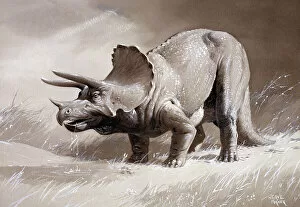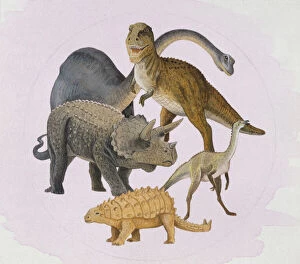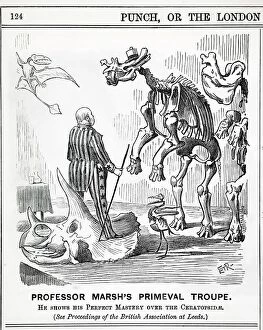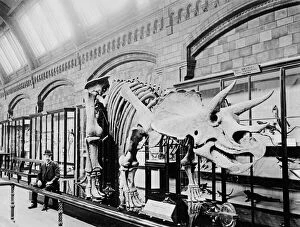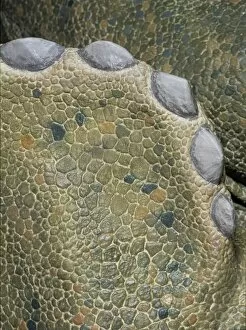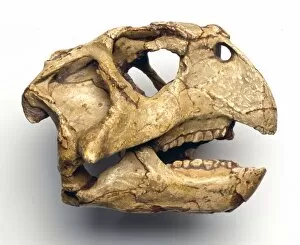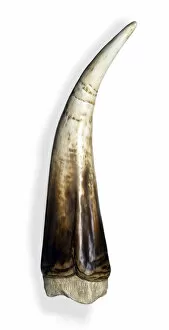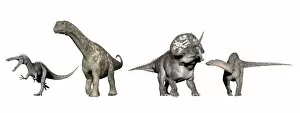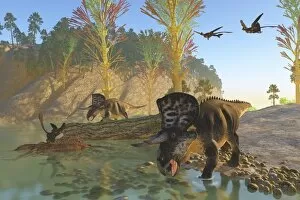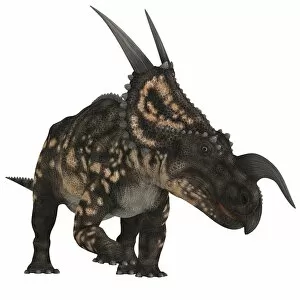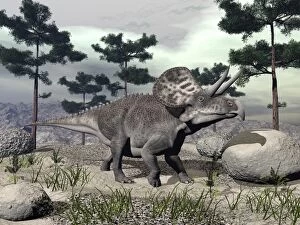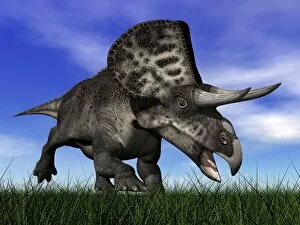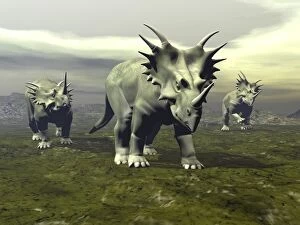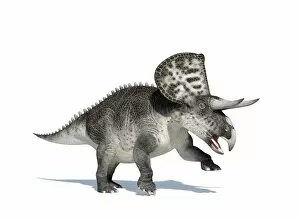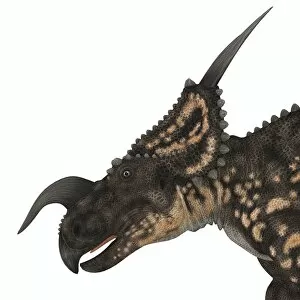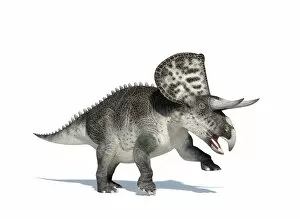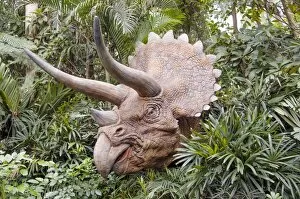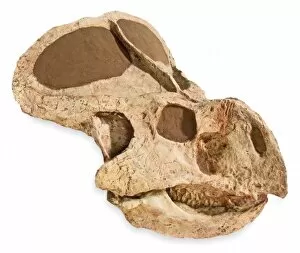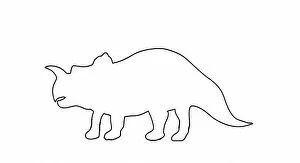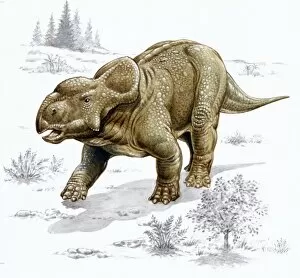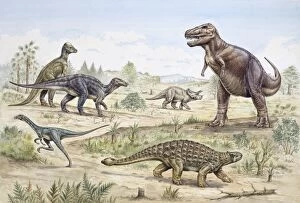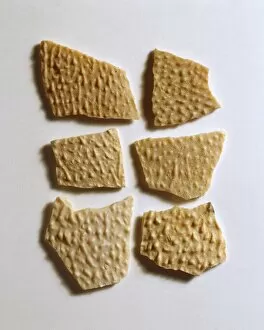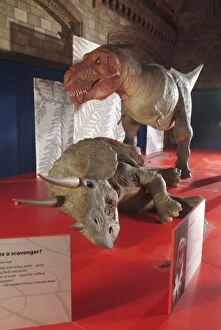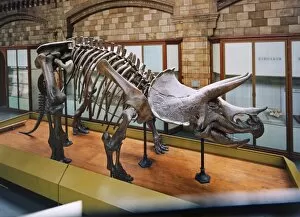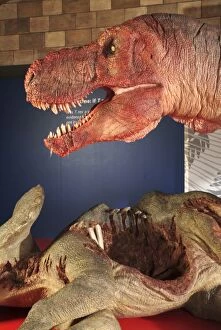Ceratopsian Collection
"Ceratopsian: The Majestic Horned Dinosaurs of the Past" Step back in time to the era of dinosaurs and meet the incredible ceratopsians
For sale as Licensed Images
Choose your image, Select your licence and Download the media
"Ceratopsian: The Majestic Horned Dinosaurs of the Past" Step back in time to the era of dinosaurs and meet the incredible ceratopsians, with their iconic horns and frills. Among them, Triceratops reigns supreme, often compared to modern-day rhinos for its massive size and formidable appearance. Dating back to 1890, a Punch Cartoon by Othaniel Marsh captured the fascination surrounding these cerapod dinosaurs. Fast forward to today, where we can marvel at a Triceratop dinosaur skeleton (C016 / 5928), reminding us of their once dominant presence on Earth. Dinosaurs come in all shapes and sizes, but protoceratops stands out as one of the most intriguing relatives of Triceratops. Its smaller stature still boasted a unique horn structure that captivates paleontologists worldwide. Speaking of horns, who could forget about the mighty triceratops horn? This distinctive feature served both as defense against predators and possibly for display during mating rituals. A side view reveals just how impressive this appendage truly was. But they are not limited to just Triceratops; Psittacosaurus skull showcases another member of this diverse family. With its bird-like beak and intricate cranial ornamentation, it adds yet another layer to our understanding of these ancient creatures. In terms of variety within ceratopsians, Suchomimus, Argentinosaurus, Zuniceratops, and Dicraeosaurus showcase different body structures and adaptations across species. From swift hunters like Suchomimus to colossal giants like Argentinosaurus - each has left an indelible mark on history. To truly appreciate these magnificent creatures up close is through examining their skin detail. The textured patterns found on Triceratop's skin reveal fascinating insights into their physical appearance millions of years ago. The world of ceratopsians is a captivating one, filled with wonder and mystery.

